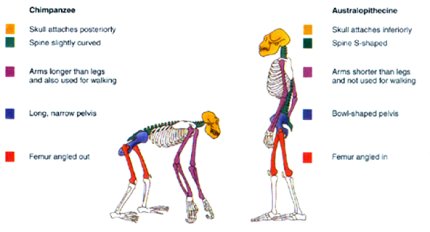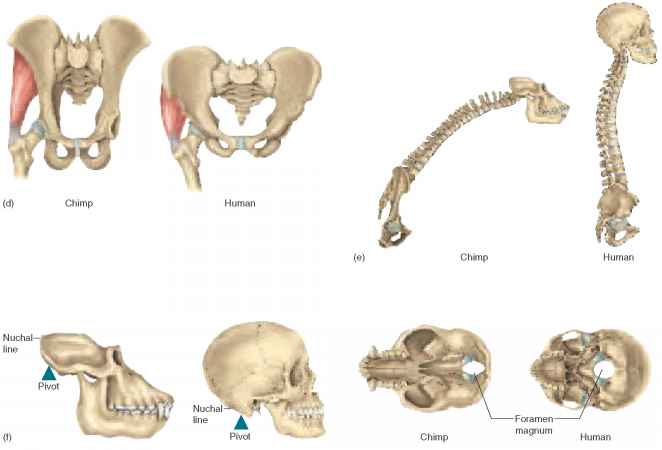What three features allow us to walk upright?
1 Answer
The modern human spine has dual curvatures (both kyphosis and lordosis) which allows us to stand erect. There are more than 3 features that allow us to walk upright.
Explanation:
The first is these curves. The second is the pelvic angles.
In order to walk, the center of gravity must remain over the supporting leg during the swing phase (when the leg is not touching the ground and is moving) of walking. To ensure that the center of gravity does not move, the pelvis has adapted specific pelvic angles.
Thirdly, the foramen magnum is positioned in the center of the basicranium (the bottom of the skull).
This is a change from the foramen magnum being further back as it is in normal quadrupeds, as the upright spinal shape requires a more central entrance into the skull in order to keep the head upright, in the optimum visual position.
The structure of the human foot is also significantly different in comparison to other modern mammals.
Other adaptations of the human skeleton to accommodate bipedalism include a shorter and broader pelvis that allows the swinging motion walking requires.
Longer legs give a bigger push when walking upright, working with the arched feet to propel the form forward while a valgus angle and lock knees increases balance.
This means that as we walk, movement of the center of gravity
is restricted so we do not walk rocking from side to side as chimps and other apes would do if they were to walk upright all the time.



